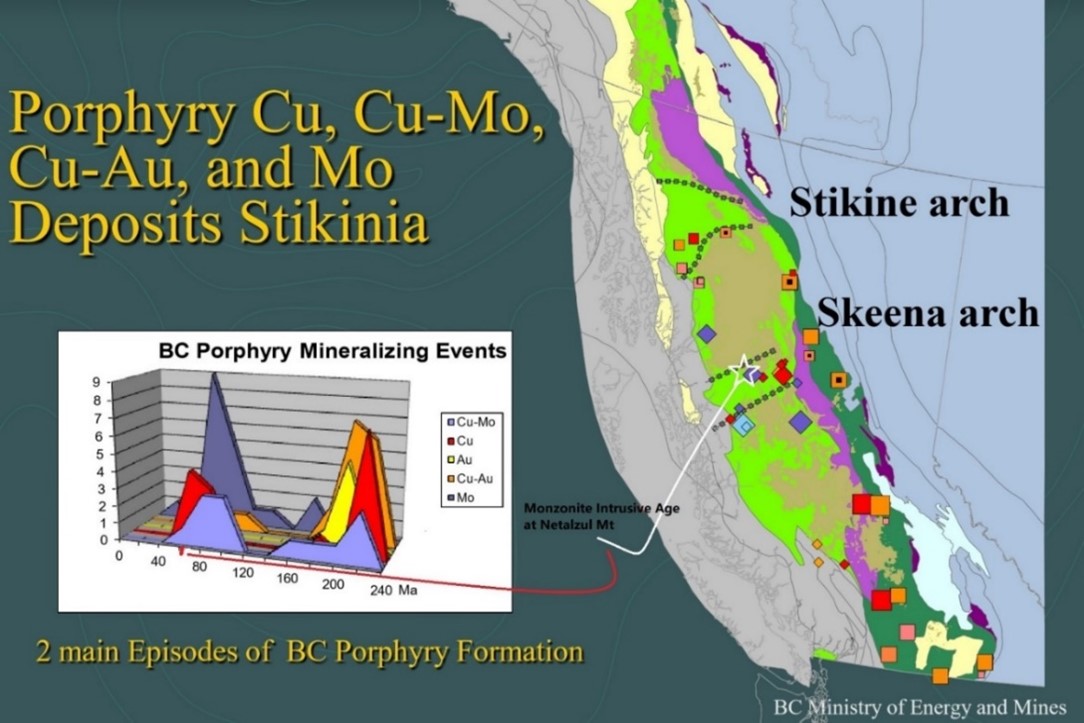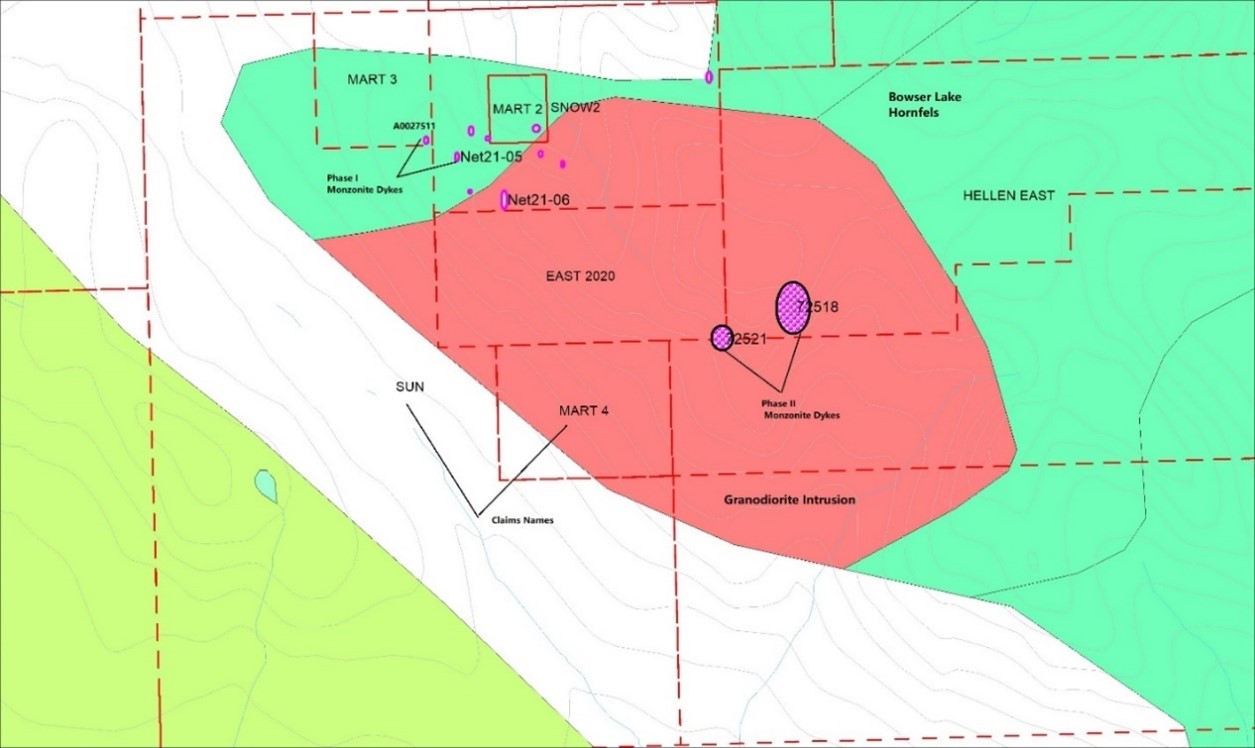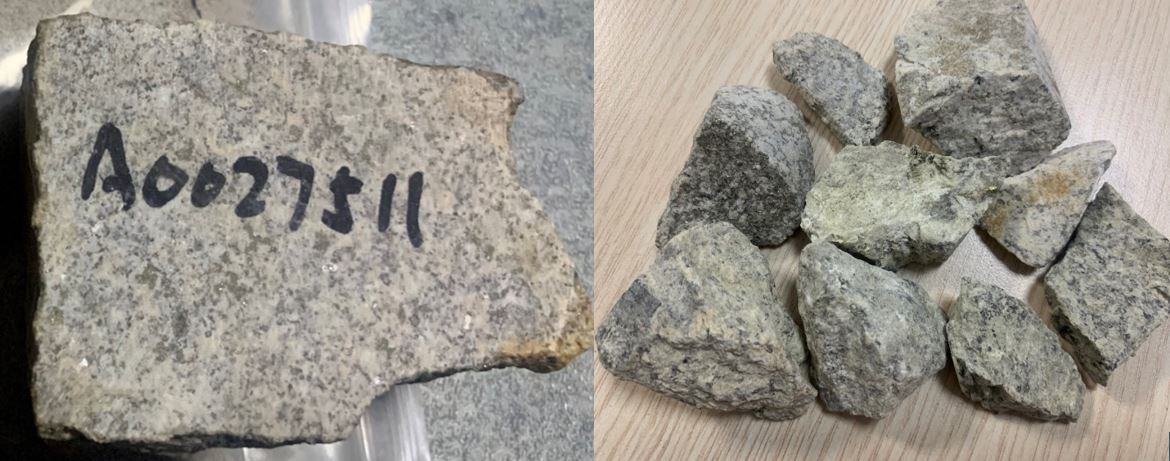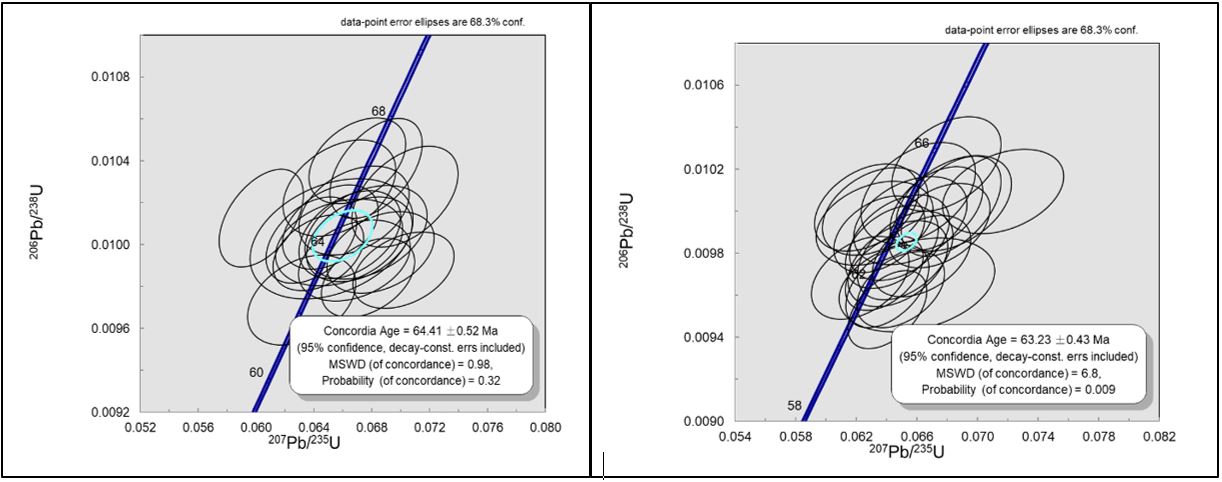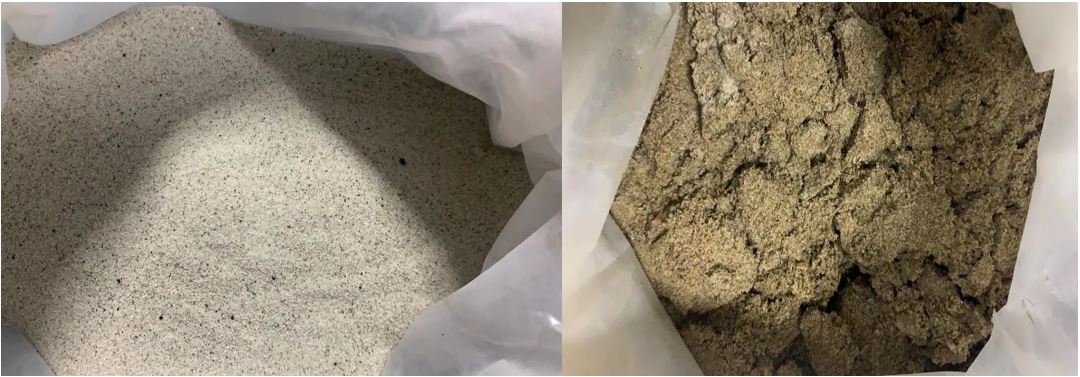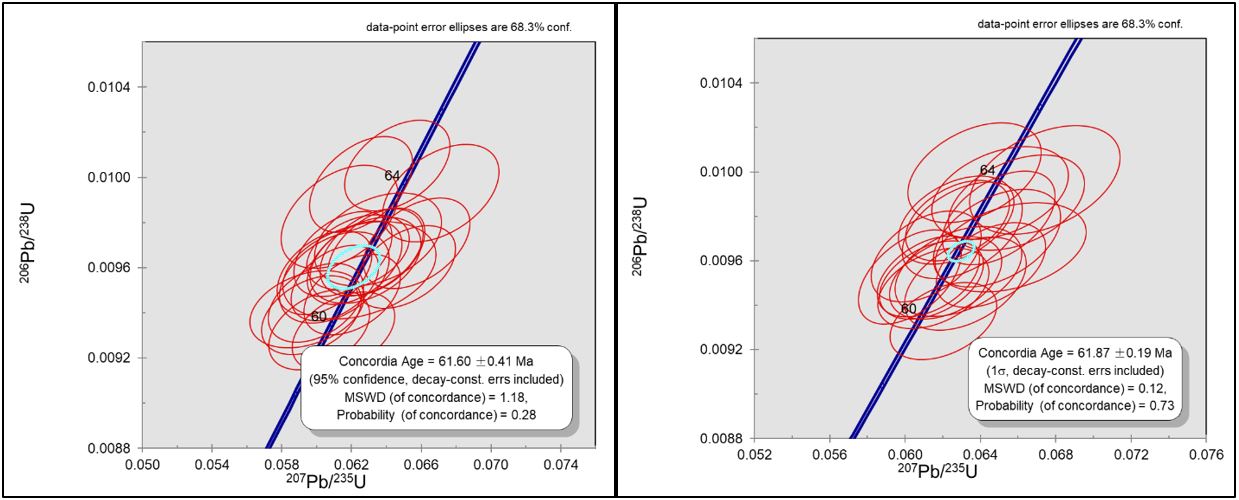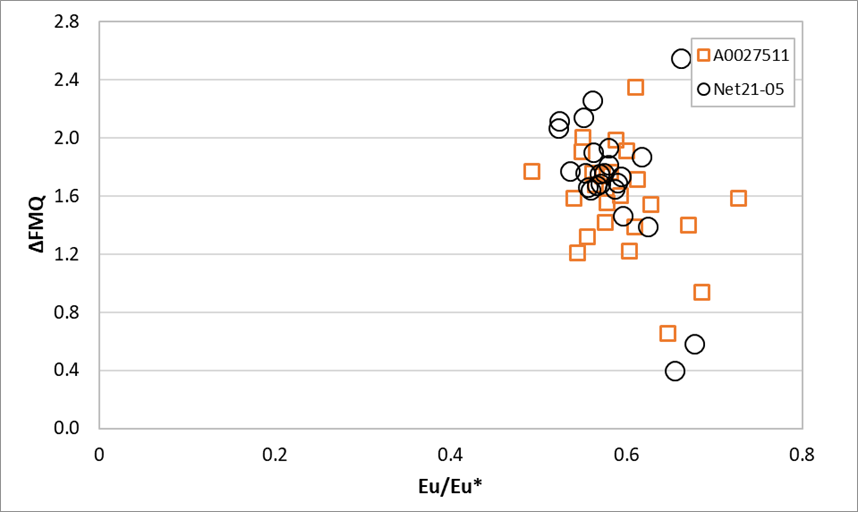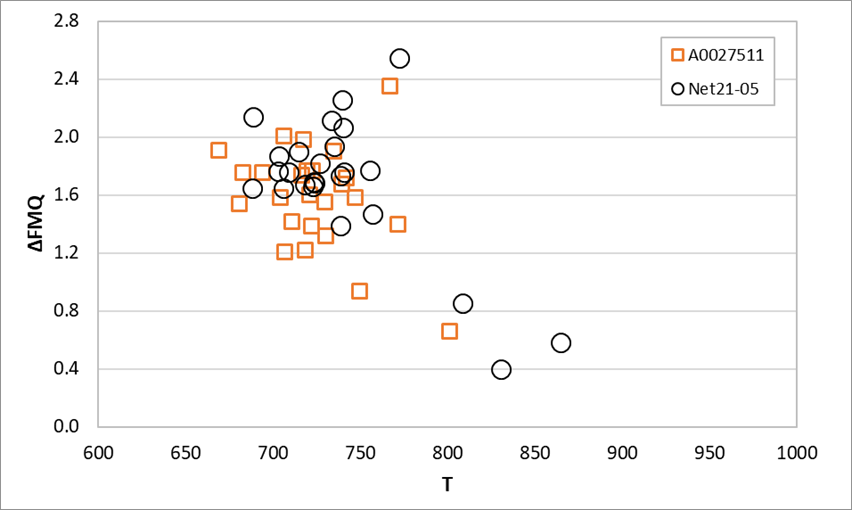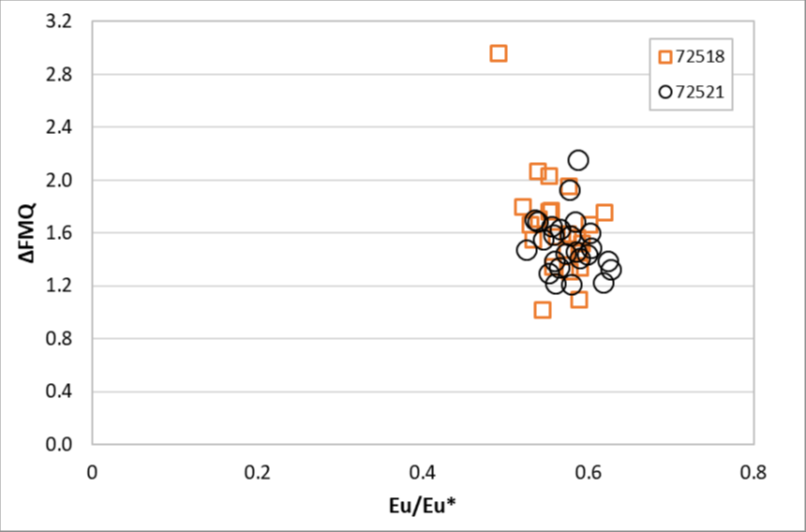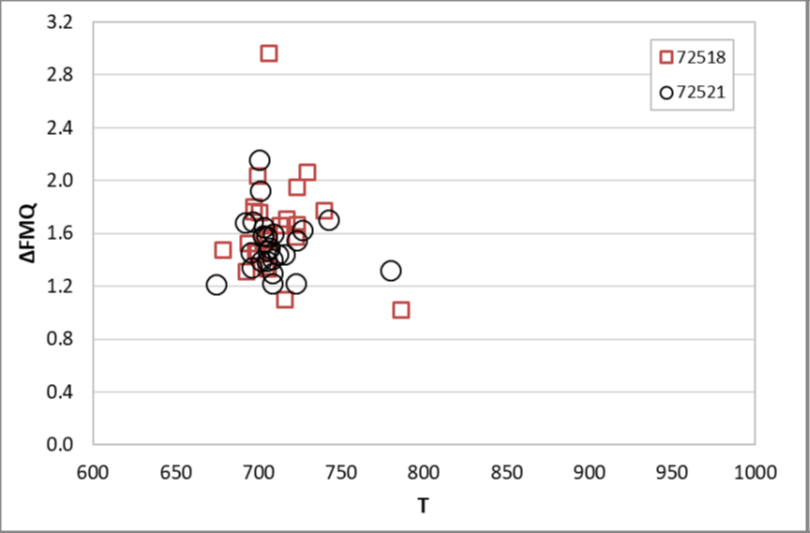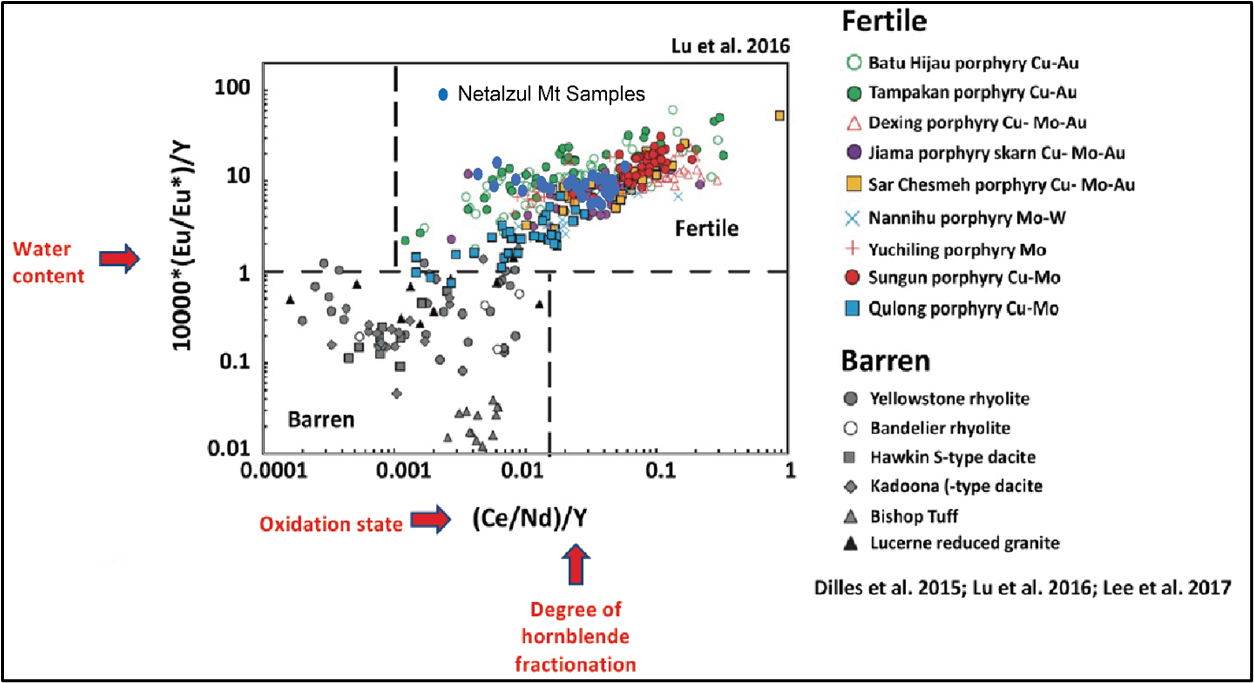Jaxon Reports on Positive “Grade” Implications of Results from Porphyry Monzonite Dating and Zircon Studies at Netalzul Mountain Project, Announces Participation at PDAC 2022
June 9, 2022, Vancouver, Canada - Jaxon Mining Inc. (“Jaxon” or the “Company”) (TSX.V: JAX, FSE: 0U31, OTC: JXMNF) is pleased to announce the results from the porphyry monzonite dating and zircon analysis studies from the Netalzul Mountain project. The geochronology study reveals the high-grade porphyry monzonite Cu mineralization (up to 1.47% Cu) formed approximately 64.41 MA to 61.60 in the Early Tertiary (Paleocene, 66-56 MA) period within two different phases, placing it within the youngest of two main episodes of porphyry formation in the Stikine terrane in British Columbia (Figure 1).
Figure 1. Two main episodes of BC porphyry formation in the Stikine terrane (modified from BC Ministry of Energy and Mines, 2011)
During field work in 2021, four monzonite rock samples were collected from surface outcrops and drill cores at the Netalzul Mt porphyry copper project (Figure 2, Table 1).
U-Pb geochronology of zircon derived from all four monzonite rock samples were conducted by LA-ICP-MS at Nanjing Focums Technology Co. Ltd. in February of 2022. Australian Scientific Instruments RESOlution S-155 laser-ablation system (Canberra, Australian) and Agilent Technologies 7700x quadrupole ICP-MS (Hachioji, Tokyo, Japan) were combined for experiments LA-ICP-MS. Test dating results are shown in Table 1 and Figures 3 to 10 below.
Dating and Zircon Study Highlights of the Monzonite Samples from Netalzul Mt Project
- Two phases of monzonite dyke intrusions were confirmed by the zircon dating study. Two samples (A0027511 and NET21-05) from the north area (Figures 2-4) are dated at 64.41 MA and 63.23 MA, respectively. A0027511 is a surface outcrop rock sample with a Cu grade @ 0.27% whereas NET21-05 is a composite core sample from a depth of 43-44 m with a Cu grade @ 0.5%. These two monzonite dykes are within a 200 m distance, with the same mineralization, lithology, rare earth and trace elements. They formed in phase I of the magma intrusion and are in the same age range as the granodiorite host at the Netalzul Mt project (Table 1).
- Two monzonite outcrop samples (072518 and 072521) from the south area (Figures 2, 5, 6) are dated at 61.6 -61.87 MA and are 2-3 MA years younger than the granodiorite host and monzonite dykes in the north area. They most likely belong to phase II of the magma intrusion. The Cu grade of sample 07521 is up to 1.47%. A similar age (61.6 MA) molybdenite vein in the granodiorite at the north area (A0020746-2) was reported in the 2020 dating study, indicating phase II of the magma intrusion is widespread at the Netalzul Mt project.
- The low Th/U (<0.50) and high Yb/Gd (>18) ratios of zircons and high Hf concentration (>10000 ppm) in most zircons in the four monzonite samples indicate the zircon was formed from mineralized, fertile oxidized, hydrous magma.
- The magma oxygen fugacity was calculated using the latest zircon oxygen fugacity meter. The Eu/Eu* ratios of all samples were greater than 0.4 (Figures 7, 9), and the calculated ΔFMQ for most analysis points of zircon was higher than ΔFMQ+1.0 (Figures 8, 10). The characteristics of magmatic oxidation in magmatic zircon indicates the potential for both extensive and high-grade mineralization.
- Mineral and fluid inclusions are common to most zircon in the four monzonite samples, suggesting that these zircons probably crystallized from relatively water-rich magmas and were the product of relatively late crystallization of the magma.
Zircon (Zr[Hf]SiO4) is a common accessory mineral in granitoid rocks including those that generate and host porphyry copper deposits and can record the evolution of its host magma and provide information on that magma’s ability to generate a porphyry copper deposit (Bouzari et al., 2020). The trace and rare elements composition, the Th/U ratio, Yb/Gd ration, ΔFMQ/Eu/Eu* ratio, Ti-in-Zircon temperature have been studied using LA-ICP-MS (Figure 11). Majority zircons (>95%) from four samples have lower Th/U (<0.45) and higher Yb/Gd (>15), which shows the typical chemistry characters zircon formed from mineralized magma (Bouzari et al., 2020). Oxygen and Deuterium Isotope Analysis shows oxygen fugacity buffered by fayalite-magnetite-quartz (FMQ) in the majority of zircons (>95%) greater than +1.0. The Eu/Eu* >0.45 show the oxidized magma features. Ti-in-zircon temperature studies show the crystallization temperatures of samples 072518, 072521, NET21-05 and A0027511 at 679℃ -786℃, 674℃-780℃, 669℃ -801℃ and 688℃-864℃, respectively. The majority of zircons (>95%) were formed under 750°C and are consistent with lower model temperatures of 750°C to 600°C; these are in the same range as other highly mineralized porphyry intrusives and close to the solidus of hydrous granite.
It is worth noting that the zircon temperature T and ΔFMQ of the two samples (A0027511 and NET21-05) in the north area show a trend of negative correlation, and the calculated ΔFMQ of the zircon with higher temperature (>800 °C) is lower than 1.0. This phenomenon may be due to the capture of more reduced magmatic zircon from hosted granodiorite, or it may be caused by magmatic mixing from early phases.
Mr. Greg Hall, senior technical advisor to Jaxon, commented, “The results are significant primarily because the youngest age dykes occur in the middle of the geochemically and geophysically defined drill target and have the highest copper grade at the Netalzul Mt porphyry project. Typically, in porphyries the best copper comes toward the end of the magmatic event as the water content in the crystallising magma chamber reaches supersaturation. These are great results and indicate the primary magma at depth is likely to have higher copper grade.”
Mr. John King Burns, CEO and Chairman of the Board, commented, “At Hazelton, Jaxon has discovered a suite of well-preserved, undercover porphyries. The ones at Netalzul Mt are located ~1,000 meters from the peak but still above sea level. In the future, most work at Netalzul and at our six other projects, will be conducted from the sides of, if not from within, the mountain, thereby dramatically reducing surface disturbance, eliminating the costs of helicopter support, and also making the projects year-round and more environmentally sustainable.”
“These current primary rock dating results tie our rocks into a window of time in regional geological history which resulted in the formation of a number of documented porphyries in the Skeena Arch area. This dating shows the formation age of porphyry deposits in the Netalzul Mt area as Early Paleocene, not Late Cretaceous. The results of this chemistry and dating work creates an additional dataset that augments our ongoing structural mapping work, extending our understanding of the dates of and temperatures experienced during the creation of this generation of the porphyry systems we have discovered, and geochemically sets the Netalzul Mt system up for the potential to be higher-grade than the other porphyries previously discovered/mined in the Skeena Arch area.”
PDAC 2022
The Company is pleased to announce it will be exhibiting in person at PDAC in Toronto from Monday, June 13 to Wednesday, June 15. Visit us at booth 2919 or contact info@jaxonmining.com to arrange a meeting. The Company will also be participating in the online event from Tuesday, June 28 to Wednesday, June 29. For more information, visit www.pdac.ca/convention.
Figure 2. Distribution map of two phases of monzonite dykes at Netalzul Mt copper porphyry project.
Figure 3. Monzonite outcrop (A0027511, Cu @ 0.27%) on left; and on right, monzonite drill core ( NET21-05, Cu @ 0.5%) from north area of Netalzul Mt project.
Figure 4. Zircon dating diagram of outcrop monzonite sample A0027511 (left) and NET21-05 (right).
Figure 5. Two monzonite pulp samples, 072518 (left) and 072521 (right).
Figure 6. Zircon dating diagram of outcrop monzonite sample, 072518 (left) and 072521 (right).
Figure 7. Binary diagram of FMQ versus Eu/Eu* from zircon grains within two monzonite samples from the north area of Netalzul Mt project.
Figure 8. Binary diagram of FMQ versus zircon formation temperature (T) of two monzonite samples from the north area of Netalzul Mt project.
Figure 9. Binary diagram of FMQ versus Eu/Eu* from zircon grains within two monzonite samples from the south area of Netalzul Mt project.
Figure 10. Binary diagram of FMQ versus zircon formation temperature (T) of two monzonite samples from the south area of Netalzul Mt project.
Table 1. Rock Sample and Dating Information Summary
| Sample ID | Lithology | Major Sulfides | Major Alterations | Age (ma) | Sample Area |
| 72518 | Monzonite | pyrite | quartz | 61.6 | South area, Netalzul, 2020 |
| 72521 | Monzonite | Pyrite,chalco-pyrite, malachite | Muscovite, chlorite, biotite | 61.87 | South area, Netalzul, 2021 |
| A0027511 | Monzonite | Pyrite,chalco-pyrite | biotite, Muscovite, calcite, chlorite | 64.41 | MART 3 claim, Netalul, 2021 |
| NET21-05 | Monzonite (core) | Pyrite,chalco-pyrite | biotite, Muscovite, calcite, chlorite | 63.23 | MART 3 claim, Netalul, 2022 |
| Ellen-01 | Quartz Veins | Molybdenite | quartz | 63.68 | MART 3 claim, Netalzul, 2019 |
| Ellen-8 | porphyritic rhyodacite | Pyrite,chalco-pyrite | sericite, chlorite | 64.07 | MART 3 claim, Netalzul, 2019 |
| Ellen-12 | Quartz Veins | pyrite | quartz | 63.83 | MART 3 claim, Netalzul, 2019 |
| A0020746-1 | Granodiorite | Molybdenite, Chalcopyrite, Pyrite | Muscovite, albite, siderite, pyrite | 63.67 | Daisy North Contact zone, Netalzul, 2020 |
| A0020746-2 | Granodiorite | Molybdenite, Chalcopyrite, Pyrite | Muscovite, albite, siderite, pyrite | 61.60 | Daisy North Contact zone, Netalzul, 2020 |
| A0027530 | Granodiorite | chalcopyrite, pyrite, magnetite | Quartz, albite, pyrite, illite, kaolinite | 63.91 | Netalzul South Zone, Netalzul, 2020 |
| A0027540 | Granodiorite | chalcopyrite, pyrite, magnetite | Quartz, albite, pyrite, illite, kaolinite | 63.82 | Netalzul South Zone, Netalzul, 2020 |
| Netalzul Top3 | Granodiorite | chalcopyrite, pyrite, magnetite, hemotite | Quartz, albite, pyrite, illite, kaolinite | 64.34 | Netalzul East Zone, Netalzul, 2020 |
| A0027520 | Granodiorite | Chalcopyrite, pyrite, magnetite | Quartz, albite, pyrite, illite, kaolinite | 62.99 | Netalzul East Zone, Netalzul, 2020 |
Figure 11. Proxies for condition of magma formation diagram of Eu/Eu* versus (Ce/Nd)/Y (after MDRU, 2020).
Sample Preparation and Analyses
All four samples were collected by a qualified geologist. Three were surface outcrop samples, two of which were pulp samples after assay. One was a composite core sample within a one-meter interval.
U-Pb geochronology of zircon was conducted by LA-ICP-MS at Nanjing Focums Technology Co. Ltd. Australian Scientific Instruments RESOlution S-155 laser-ablation system (Canberra, Australia) and Agilent Technologies 7700x quadrupole ICP-MS (Hachioji, Tokyo, Japan) were combined for the experiments. The 193 nm ArF excimer laser, homogenized by a set of beam delivery systems, was focused on zircon surface with fluence of 3.5J/cm2. Each acquisition incorporated 20 s background (gas blank), followed by spot diameter of 33 um at 5 Hz repetition rate for 40 s. Helium was applied as carrier gas to efficiently transport aerosol out of the ablation cell, and was mixed with argon via T-connector before entering ICP torch. Dwell times were set to 20 ms for 207Pb, 15 ms for 206Pb and 208Pb, 10 ms for 232Th and 238U, and 8 ms for other trace elements.
Harvard standard zircon 91500 (1062Ma) was used as external standard to correct instrumental mass discrimination and elemental fractionation during the ablation. GJ-1(600Ma) and Plešovice (337Ma) were treated as quality control for geochronology. Trace elements abundance of zircon were external calibrated against NIST SRM 610 with Si as internal standard. Raw data reduction was performed off-line by ICPMSDataCal software (Liu et al., 2010).
Qualified Person
Yingting (Tony) Guo, P.Geo., President and Chief Geologist of Jaxon Mining Inc., a Qualified Person as defined by National Instrument 43-101, has reviewed and prepared the scientific and technical information and verified the data supporting such scientific and technical information contained in this news release.
About Jaxon Mining Inc.
Rich in large-scale geological targets/assets, Jaxon has seven porphyry system targets on its 100% controlled Hazelton property, an interconnected network of concessions spanning 700 km2 in the Skeena Arch in northwest British Columbia, Canada. The Skeena Arch is an exceptionally orogenic and metallogenic setting, geochronologically suitable to host preserved porphyries.
Jaxon pursues the discoveries of deeper, under cover, commercial scale and grade Cu, Au, Ag, polymetallic porphyry epithermal systems associated with distal mineralized, propylitically altered zones nearer to surface. Jaxon's team is made up of experienced model-driven explorationists. Geochemical, geophysical and structural data is collected and integrated to generate 3D models to assist in the visualization and projection of the location of targeted porphyry systems.
Netalzul Mt is Jaxon's most advanced target, the priority of seven identified porphyry epithermal system targets at Hazelton. Red Springs is the second target being prepared for drill testing. The five other targets are in various advancing stages of exploration.
ON BEHALF OF THE BOARD OF DIRECTORS
JAXON MINING INC.
“John King Burns”
John King Burns, Chairman
For more information please contact:
Investor Relations
Kaye Wynn Consulting
T: 604-558-2630
TF: 1-888-280-8128
E: info@kayewynn.com
Freeform Communications
T: 604-243-0499
E: enquiries@freeform.com
Corporate
T: 604-424-4488
E: info@jaxonmining.com
This news release may contain forward-looking information, which is not comprised of historical facts. Forward-looking information involves risks, uncertainties and other factors that could cause actual events, results, performance, prospects and opportunities to differ materially from those expressed or implied by such forward-looking information. Forward-looking information in this news release may include, but is not limited to, the Company's objectives, goals or future plans. Factors that could cause actual results to differ materially from such forward-looking information include, but are not limited to, those risks set out in the Company's public documents filed on SEDAR. Although the Company believes that the assumptions and factors used in preparing the forward-looking information in this news release are reasonable, undue reliance should not be placed on such information, which only applies as of the date of this news release, and no assurance can be given that such events will occur in the disclosed time frames, or at all. The Company disclaims any intention or obligation to update or revise any forward-looking information, whether as a result of new information, future events or otherwise, other than as required by law. Neither TSX Venture exchange nor its Regulations Services Provider (as that term is defined in the policies of the TSX Venture Exchange) accepts responsibility for the adequacy or accuracy of this release.

